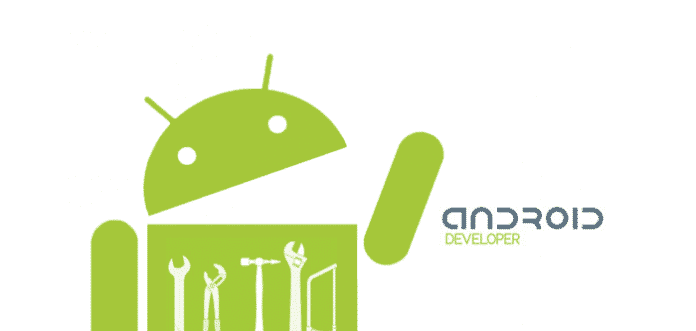Table Of Contents
Follow this 7 step guide to create your first Android App
Android is no doubt a great platform for users as well as developers. Thanks to Android Studio and continuous support from Google. And in case you were thinking to begin creating Android apps but did not have much idea of the know-how, you can follow this article to get your doubts clarified.
Programming Language
Android apps are developed in Java. You do not need to be an expert, but you should be good in specific areas, e.g. you need to have good knowledge of AWT and Swing for developing a GUI for your app. Getting easy with following topics before starting will make the development phase more enjoyable.
>> Event Handling.
>> Swing.
>> Constructors.
>> JDBC.
>> Classes, Objects and Methods.
>> Packages.
>> Abstraction.
>> Polymorphism.
>> Inheritance.
You’ll also need to learn basics of the Extended Markup Language(XML).
Places to Learn From
You can Learn Basics of Java and Android Development from these websites.
1. TreeHouse
2. Tutorials Point
3. Udacity( Android development for beginners)
4.Youtube
5.EdX
Steps to get an app built
1. Ideation
First of all an idea is required to be worked on. You’ll need to have a clear view of what your app will be for and what it will do. A good idea will be to start small and gradually add sophistication. Don’t make it so boring that you don’t want to make it but try to avoid any complex functions as far as possible. Ideally, the app will only require one ‘screen’ (activity) and will involve some simple interactions so that something happens when the user presses a button. Consider it a challenge to make something that’s genuinely useful with the minimum amount of code.
2. Choosing your IDE
The most common way to build Android apps is to use Android Studio and Java. This is the official method recommended by Google and it will afford you a lot of flexibility while ensuring there’s plenty of support if things go wrong. This is also the method you will need to know if you ever plan on becoming a professional developer.
There are numerous other options for your IDE and language too however. You may pick Unity and C++ for instance if you want to make a game. Basic4Android is an IDE focused on rapid development that lets you code with BASIC rather than Java. There’s even an IDE that runs on Android called AIDE.
3. Collecting Resources
Resources mean images and other material you will use in your app. You can download numerous images and use them but be aware not to violate someone’s copyright.
4. Building the layout of your app in IDE
Now you’re going to create your layout in Android Studio using the ‘designer’. This is a tool that lets you simply drag and drop the widgets (also called ‘views’) where you want them on the page. You’ll need to start a new project in Android Studio to do this but there will still be no coding necessary at this point (except maybe a little XML). To start a new project select File > New > New Project. Follow the steps selecting a name for your project and for your activities and choose ‘Empty Activity’.
5. Writing the core code
Now comes the more challenging part – adding the code. You know the basics of Java and you have your widgets/views already in place. Now you’re going to open the Java file for your main activity and simply create some ‘onClick’ events to add code that will run only when users click a specific button or otherwise take a specific action.
6. Implementing more complexity
By now though, you should have some of the basic functionality in place so that your app responds to button clicks (in one way or another) and perhaps stores some variables.
Next is to add the more advanced functionality that will be specific to your app. For example, you might want your app to play music when a button is clicked. Maybe you want to add some flashy animations. Or perhaps you need to know how to transition from one activity to the other.
7. Final review and publishing
Now comes the last step. You’ll have to test your app for bugs and once everything is right you can get your app published on Google Play Store.

